This is the 18th post in a series of Nikon D850 tests. The series starts here.
I had a question regarding whether the focus shift shooting feature on the Nikon D850 worked with the Sigma Art lenses, which have the reverse rotation direction of the focusing ring from F-mount (and any Nikon mount, as far as I know) Nikon lenses.
I set up my focusing target and followed this procedure:
- Sigma 50 mm f/1.4 Art on D850.
- ISO 64
- Focus shift, silent shutter option
- 100 steps
- Minimum step size (1)
- Aperture exposure mode
- f/1.4 through f/f/5.6 in whole stops
- Wescott LED panels set to 5500 K.
- Target distance, 3 meters.
Here’s the target as seen by the camera:
I used Fast Raw Viewer to discard the really out of focus images and put the rest through my processing pipeline: dcraw in document mode, MTF Mapper, Matlab, and Excel.
Here are the results:
The vertical axis is MTF50, measured in cycles per picture height (cy/ph). The shot taken with the lens focused to the closest position is on the left, numbered step 0. There are 20 more exposures plotted. There is no way to know the focused distance for these exposures. You can see that the steps are much larger than the ones I use when I’m measuring LoCA and focus shift with the razor blade and the Cognisys rail. I ended up throwing away 80 images from each set. The flat tops of the red and blue curves are indications that the camera missed the actual MTF50 peaks. This is middling sharp in absolute terms but more than respectable for f/1.4.
The rest of the f-stops:
Now we’re seeing some real sharpness. I should note that this is an inkjet-printed target, so we’re not going to see off-the-charts numbers.
This time the camera missed the peak of the green curve. I’m guessing that it’s at least a high as the blue one.
Very nice. The depth of filed is still not enough to cover up the longitudinal chromatic aberration (LoCA), though.
From the narrowness of the high parts of the curves, it looks like the camera probably came close to catching the peaks at af/5.6.
We can get a sense of whether the camera’s step sizes happened to catch the actual peaks by looking at the data points.
The thing to look for is the symmetry of the two points in each curve on either side of the peak. If they’re about the same MTF50, then we probably caught the peak.
Here’s a case where there is some obvious missing of the peak going on:
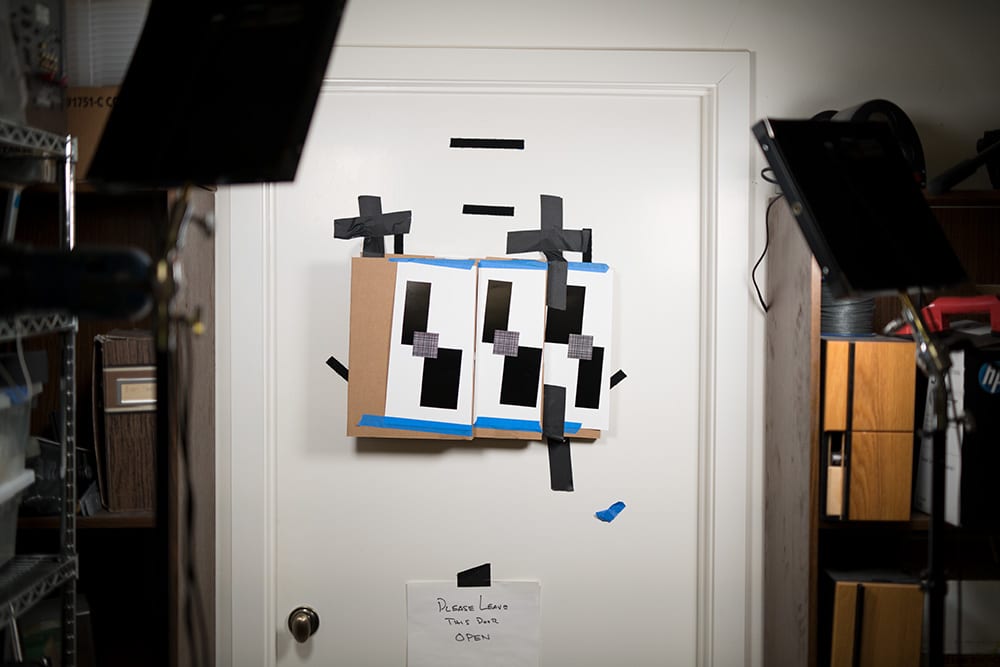
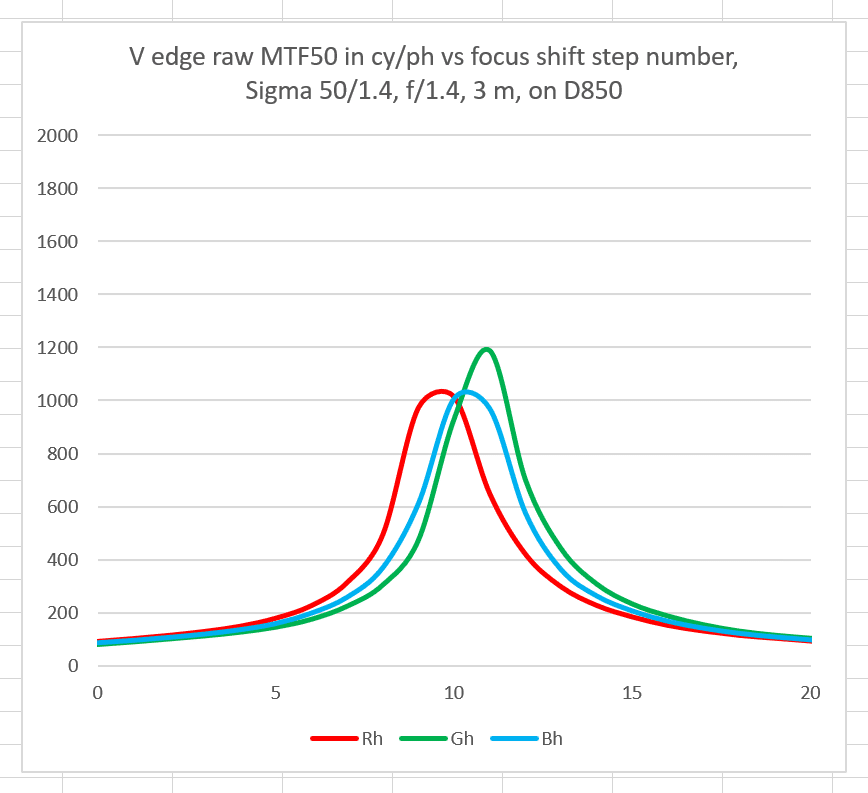
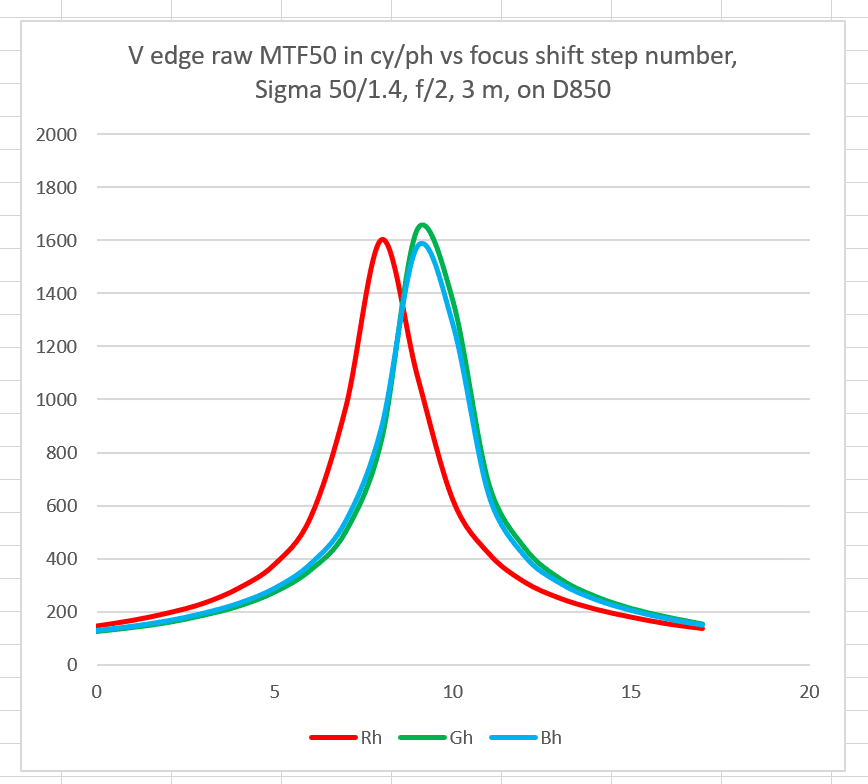
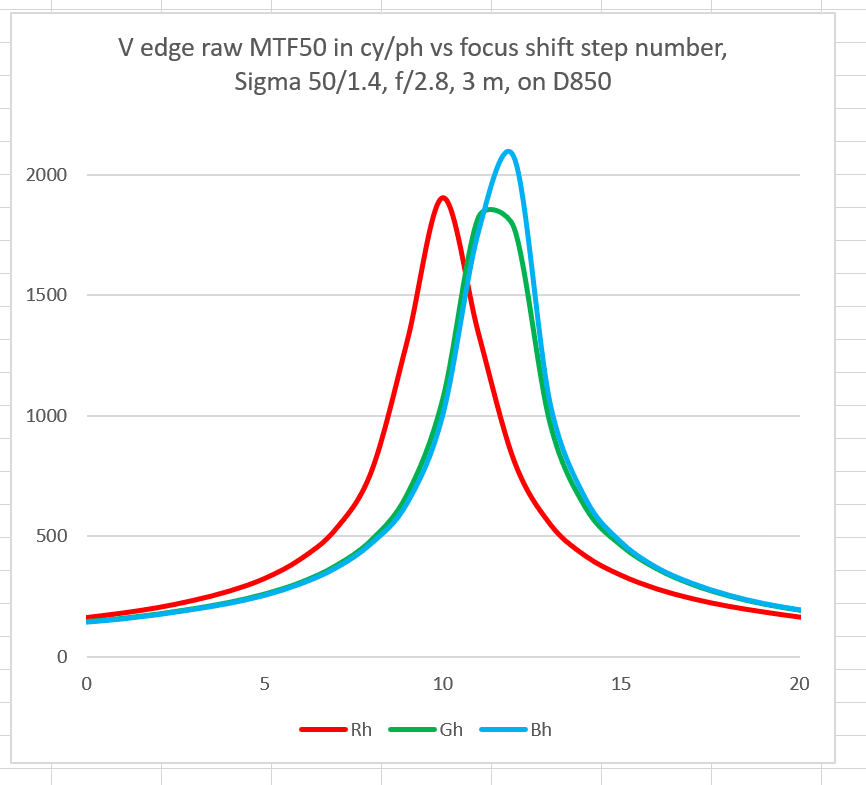
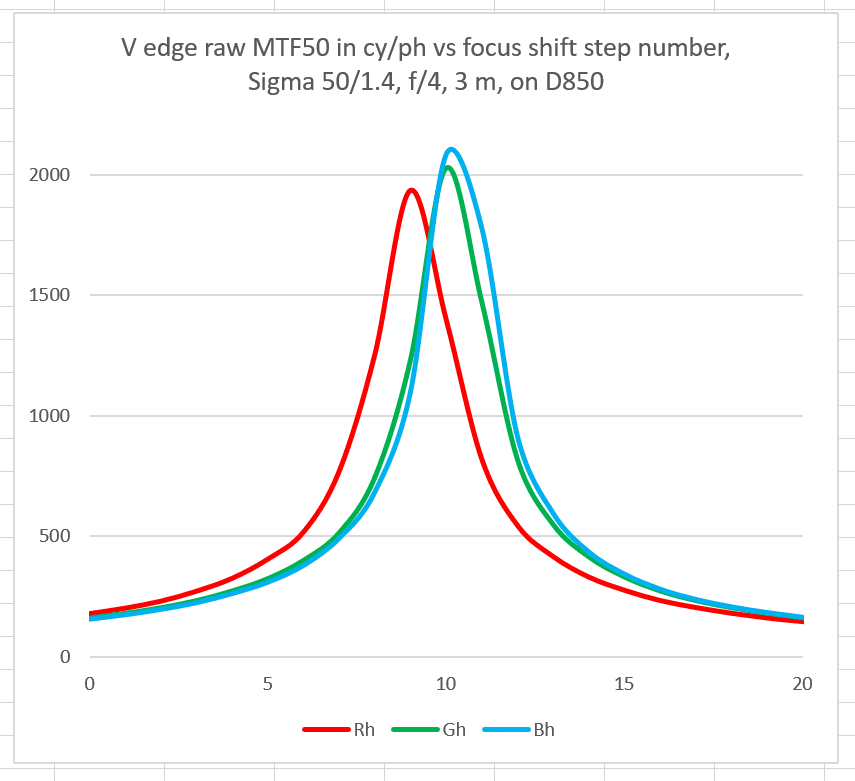
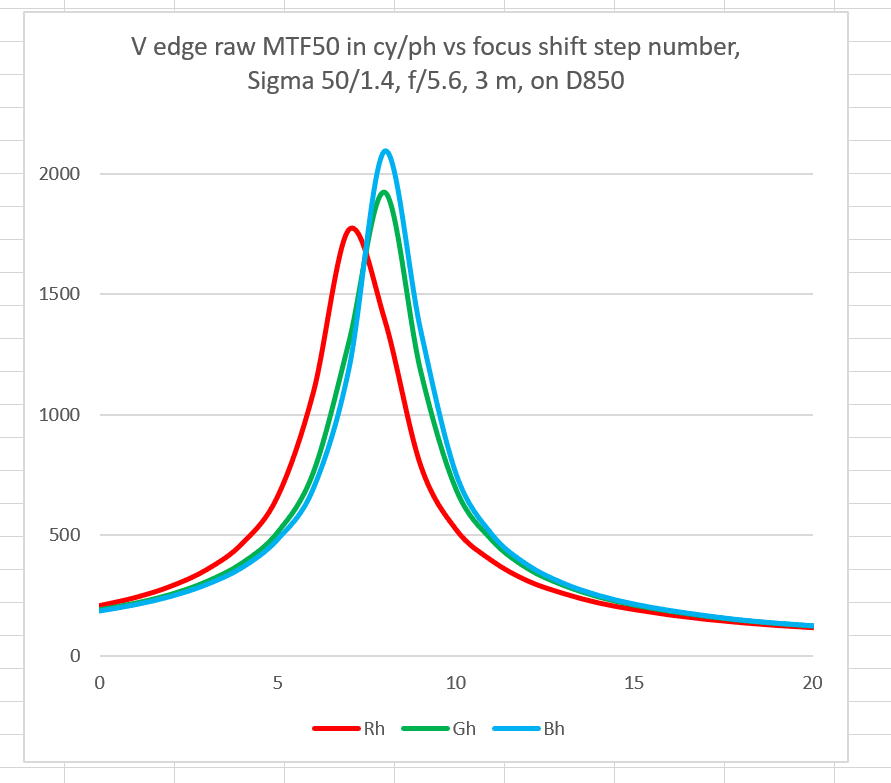
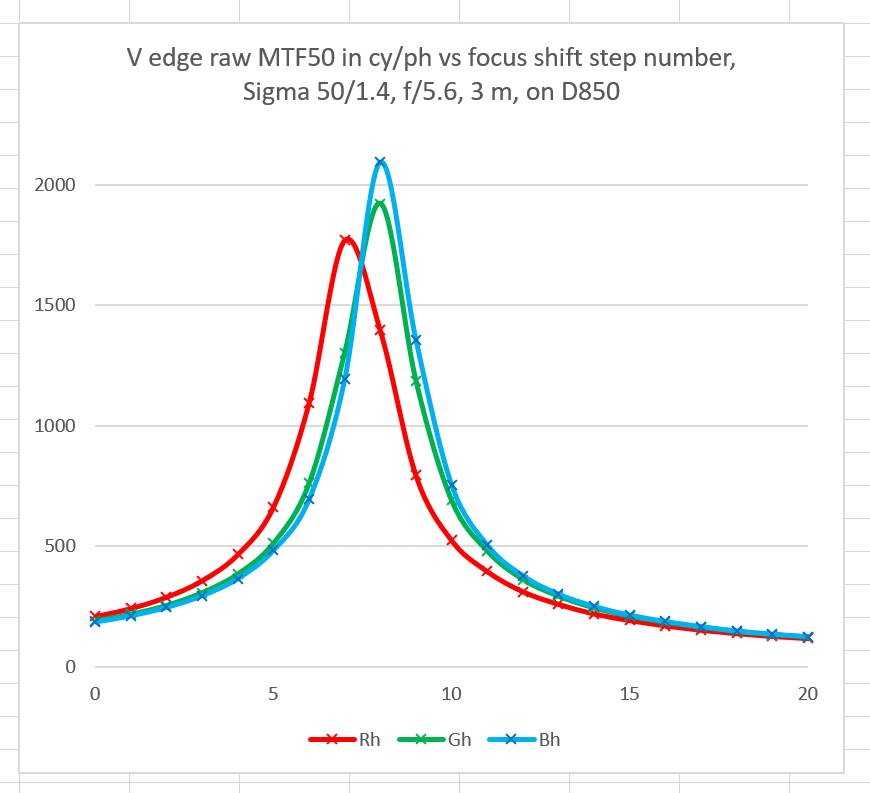
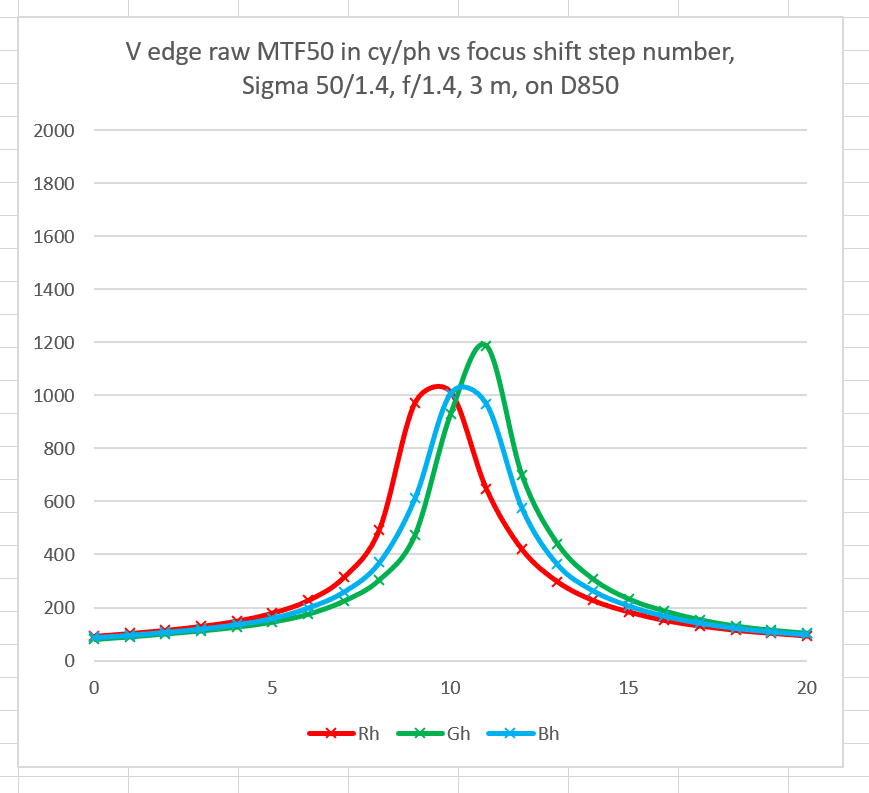
Jim, thanks so far for what has been a fascinating look into the D850’s PDAF behavior (coming from another new D850 owner).
The Sigma makes me wonder if it’s possible for you to test the idea that different focusing distances could require different tune values, since the Sigma dock lets you tune at 4 different distances. The software also lets you tune at different focal lengths, and I wonder how much variation is there at different focal lengths of a zoom.